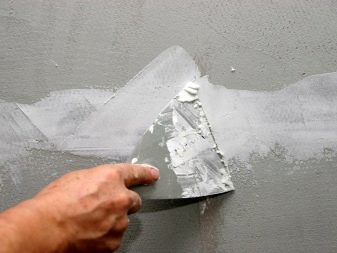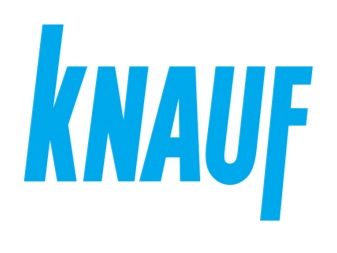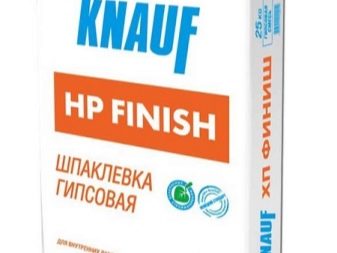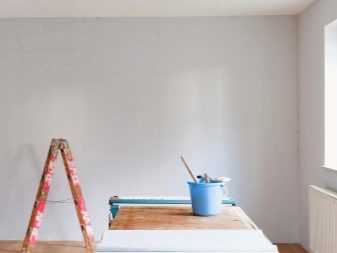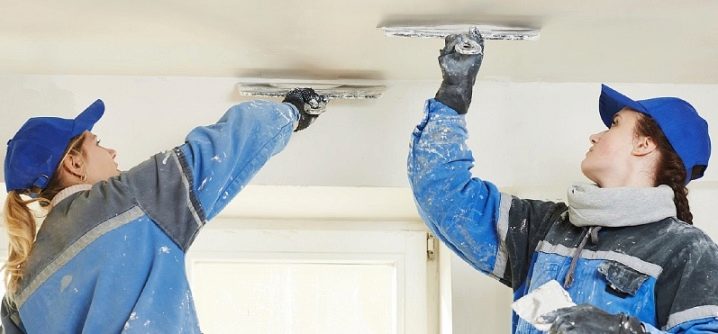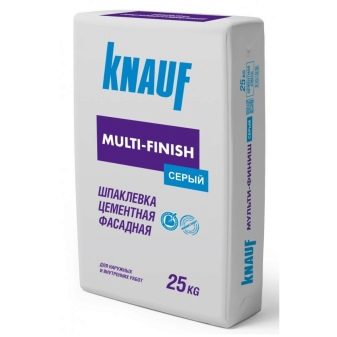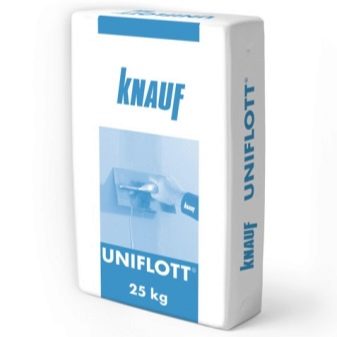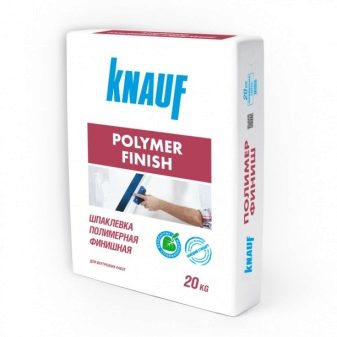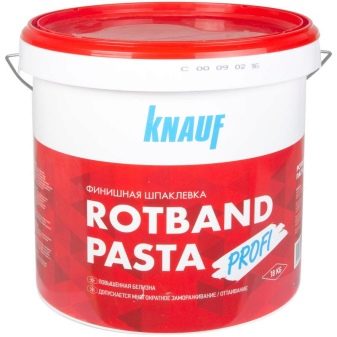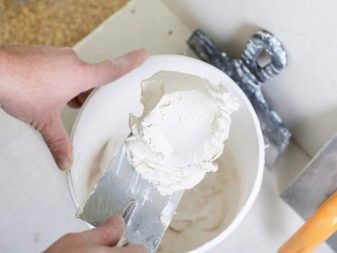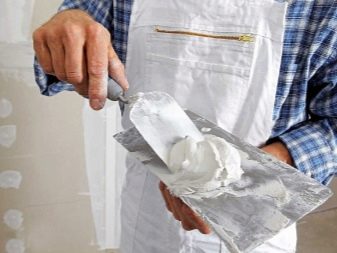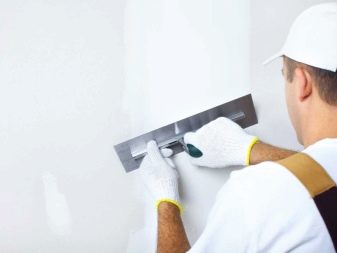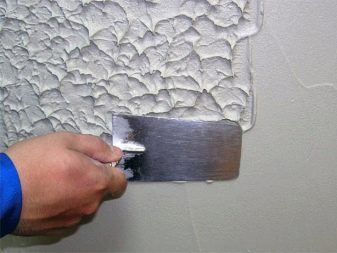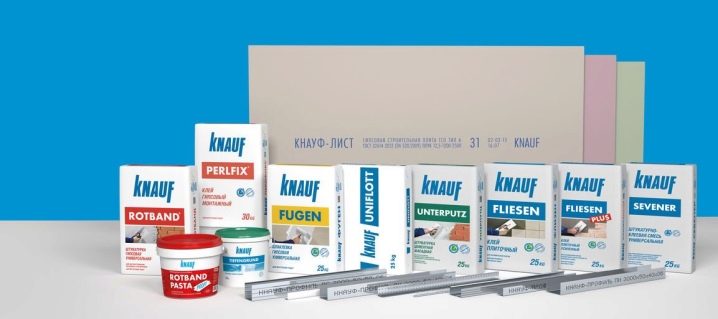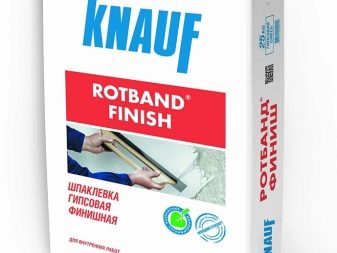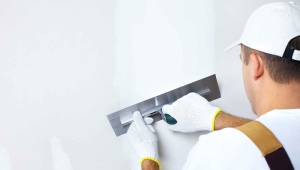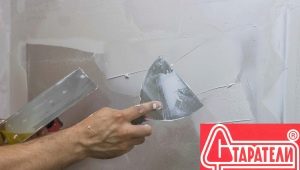Knauf finishing putty: composition and specifications
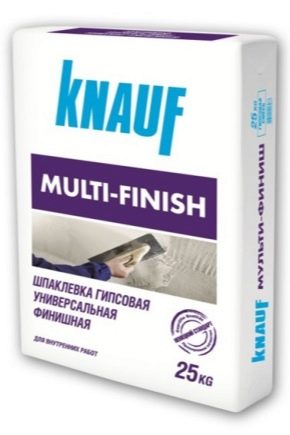
Putty Knauf today is one of the most common finishing materials. And there are explanations for this: it is easy to use, does not require special skills for work and does an excellent job with leveling any surfaces.
Special features
The putty has a fairly rich selection, and differs in its graininess - there is a coarse, medium-grained and fine-grained putty. All these species have one task - to level the surface. But the choice of one or another type of putty will depend on what kind of quality surface is needed. To get an ideal or close to it surface, use a fine-grained putty. From here it got its name - the finish.
After surface treatment with such a putty, you can do anything with it: primer, paint, glue the wallpaper, cover it with any decorative coatings, and you can do nothing at all - leave the surface as it is.
The market now presents a huge selection of finishing putty, differing in quality and price. The leading position in all their diversity is putty German brand "Knauf". It has a number of advantages and its own features.
Knauf finishing putty contains, in its basis, gypsum or cement material in combination with various polymer additives. On sale it is presented in a convenient packaging form from 5 to 25 kg. It has a pleasant, close to white or gray color, and is used for both external and internal works in the premises.
It has the following useful properties:
- resistance to high humidity;
- is an environmentally friendly material;
- does not require a large thickness in its use, which speaks of its cost-effectiveness;
- it is applied on previously plastered surfaces, masking any of its roughness and unevenness as much as possible;
- works well with drywall, sealing the joints between the sheets, and also allows you to locally align the walls in areas of irregularities;
- after drying it has a rather high strength and does not crack - the high adhesive properties of this putty will not allow it to move away from the surface;
- shelf life is 12 months.
A significant disadvantage is the fact that in the open state putty can only be a day. After that, it is not recommended to use it.
Kinds
There are some differences in finishing putty. In its composition it will differ somewhat depending on the type of material of the surface on which it will lay: concrete, cement plaster, gypsum fiber, drywall or brick.
Finishing putty is divided into four main types:
- Cement. For example, Knauf Multy-Finish. It is gray and white. It is used for surfaces such as cement plaster and concrete. It can be used to fill cracks and holes in external facade and interior works with high humidity.
- Plaster. A variety of gypsum plaster is very extensive. It makes no sense to dwell on each of them separately, but you should give an example of individual brands, for example, Knauf Uniflott.
Its basis is high-strength gypsum mixed with polyester additives. It is mainly used for sealing of drywall seams. Due to its strength characteristics when working, it does not require a reinforcing tape (serpyanka).
Knauf Fugen Gydro - distinguished by its high moisture resistance. Therefore, as GKLV, can be used in bathrooms. There are also universal plaster putties for various types of work.
- Polymer. Knauf Polymer Finish putty is a dry white mixture based on a binder polymer substance. Due to its high adhesion, cracks are not terrible for it, and because of the presence of microfibers, such a composition does not shrink.
- Ready mixes. The main feature of the finished putty is that it does not need to be diluted. This is a ready-made mixture, which is based on vinyl. It has a clear white color. It is applied to smooth surfaces along with the previous structures. It includes Knauf Rotband Pasta and Polimer Finish. Available in containers of 18 kg.
As mentioned above, the finishing putty is characterized by a small thickness of the application. However, this thickness may vary depending on the surface itself and the type of putty.
Consumption
The putty consumption per 1 m2 will be prompted by the instructions. However, in reality, these numbers are different. The manufacturer indicates the values applied to the ideal wall surface. In practice, the picture may be somewhat different. Naturally, before starting the calculations, it is necessary to decide on the type of surface and the type of putty mixture.
Ideally, gypsum plastering will require about 0.8 kg per 1 square meter. m surface. This figure will vary depending on what kind of surface. For example, if it is a brick with a lot of seams and dents, then you should boldly add as much to this number. In the case when the surface is drywall, you can focus on it.
If we apply vinyl ready putty to this example, then here we need to make a start not from 0.8 kg per square meter, but from the figure of 1.2 kg. Everything else is the same, and acceptable to any type of putty.
How to apply?
Before applying the putty must take care of the surface. There is one simple rule: the smoother it is, the better. This will play a huge role both economically and technically.
Before starting work, it is imperative to treat the surface with a soil mixture - it will provide better adhesion (adhesion) of the putty. Then you need to choose a spatula. The smoother the surface, the wider the trowel can be taken - this will shorten the working time. For angular and difficult places a smaller trowel should be used.
The entire process usually takes place in two stages.In the first, the largest cracks and depressions are sealed, and in the second, the entire surface is puttied.
It is necessary to have in hands two spatulas. It is necessary to scoop one of them as much as possible of the prepared solution and keep it in front of you. The second should work, consuming the mixture from the first spatula. In this position, you do not have to lean into the container for the solution each time. When applying, keep the working spatula at an angle of 45-60 degrees to the wall.
There is another way: you can putty putty on the entire wall at once with dotted slaps, and only then level off. This is a matter of taste and depends largely on the surface itself. If it is smooth and close to perfect, then the second method is perfect. You can use not a spatula, but a rule with a length of 1 to 2 meters. Saving time and cost is obvious. When drawing it is necessary to control layer thickness. This one of the mandatory rules will help in the future to avoid problems with cracks and delamination.
The thickness of the finishing putty may be different depending on its type. But usually for the gypsum version it is from 1 to 4 mm, while for the cement one it can be 2-6 mm.This value can be found on the product packaging. The main thing - do not exceed it. With a thick layer of putty will be very long to dry, which can lead to its future cracking and deformation of the layer as a whole.
In addition to leveling the plane of the surfaces of walls and ceilings, putty can be applied so as to get the original embossed pattern.
To do this, the solution should be put in such a way that it resembled a thick curd mass. The readiness of the solution can be easily checked - to do this, apply a solution in the amount of 100-150 g to the spatula and tilt it vertically. If the solution does not deform and does not slip, then it is ready.
Then you need to put it in small portions so that you get the desired texture. To do this, the spatula must be applied flat to the putty area, slightly pressing and lifting its lower part. By working in this way in different directions and with different intensity, you can get a rocky surface. After the putty dries, it should be a little wipe from overly protruding parts of the "rock". This can be done with ordinary sandpaper or a damp, stiff sponge.
There are many different ways to make the surface of a particular texture using rollers, polyethylene and other tools.
After completion of work it is necessary to rinse the entire instrument and container from under the solution in warm water.
Reviews
On the Internet, as well as on the magazine pages of publications devoted to the construction and repair, you can find a huge amount of positive feedback on Knauf putty. And this is understandable, because the company is the most popular all over the world. This German corporation has been a manufacturer of finishing materials for over 80 years.
Among the reviews can be traced the following statements of masters:
- usability;
- easy to apply;
- does not have lumps;
- time to prepare the solution takes a few seconds;
- has high adhesion;
- does not lose its properties for a long time, what justifies itself by 100%.
All feedback from specialists can be reduced to one: Knauf products are of excellent quality, meeting all the stated requirements of the manufacturer.
On how to level the walls with Knauf putties, see the next video.
